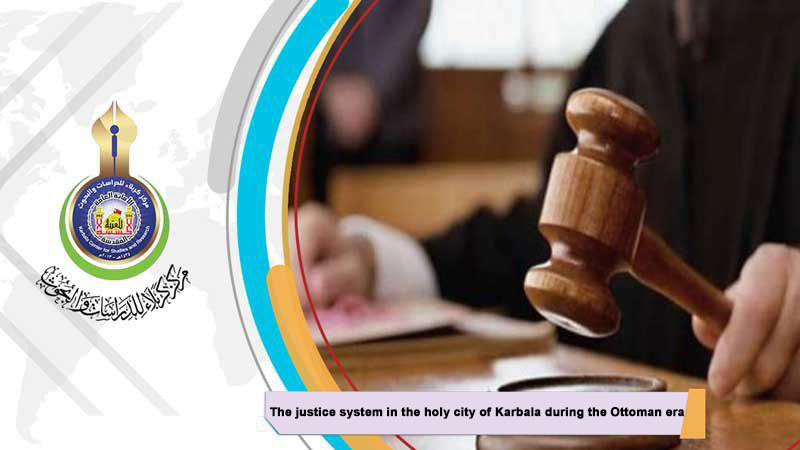The judicial system in the previously known "Karbala district", was distinguished as a tribal judiciary in which most cases were settle according to tribal norms away from the Ottoman courts, and without the intervention of the Ottoman government in them.
The traditional problems were decided by scholars or clerics according to social and clanical norms as their ruling was binding to everybody involved. As for the Ottoman judicial system in the Karbala District, it was the responsibility of the "District Court", which was located in "Shams al-Dawla" grove near the shrine of the scholar "Ibn Fahd al-Hilli". After turning the grove into a hospital, the court was relocated to "Dar al-Qutub" institution in front of the current municipality department, and then to old "Saray" castle, to be relocated later into a building of an unoccupied school in the western Abbasiya town after demolishing the aforementioned castle. It has finally been moved to its new building next to the governorate building.
Since the cities of Najaf and Hindiya were administrative affiliated to the Karbala Brigade, each of them has a local court. The courts of the Holy City of Karbala in the late Ottoman era witnessed massive changes in their judicial formations, especially in the 1317 Hijri, 1899 AD, as the president of the court of law, was appointed by the Ministry of Justice in Istanbul, while other members were elected by the District’s board of directors.
The court was examine the disputes between individuals such as real estate claims, the personal debt cases, and seizing immovable property, as the opposite party in such cases was the employee of the individual department. The District Court of Justice was like an appeals court for all judgments appealed by the district court courts and its rulings are not subject to further appeals.
The district court of Karbala was no different from the Court of Justice, as it handles criminal cases such as murder, theft, and vice, as well as displaying disputes between Muslims and non-Muslims. This court was announcing the cases brought by the local population in the brigade against each other, and announces the measures it takes regarding these cases as well as informing the control departments formerly known as "Dhabita" to implement the rulings issued by it.
Sources:
1- Karbala's Civilization Encyclopedia, the Ottoman documents: by Karbala Center for Studies and Research, Dar Al-Kafeel print house [Vol. 1, p. 166].
2- Nassar Abdul Adhiim Abbas, Iraq’s Municipalities in the Ottoman Era (1534-1918 AD), PhD thesis, the Institute of Arab History and Scientific Heritage, Baghdad, 2005, [p. 213-288].

